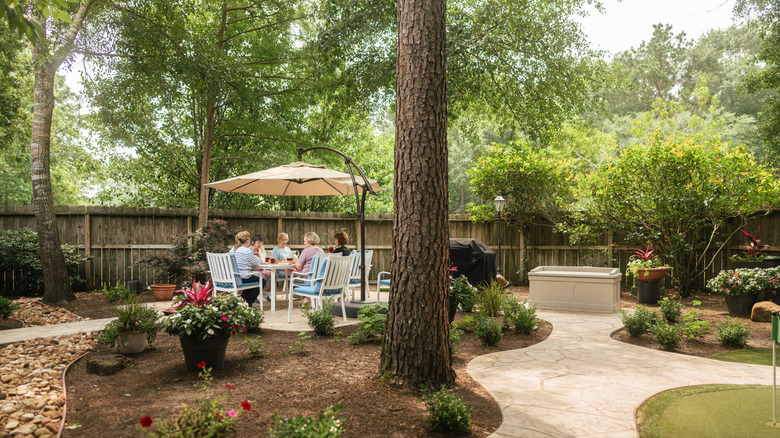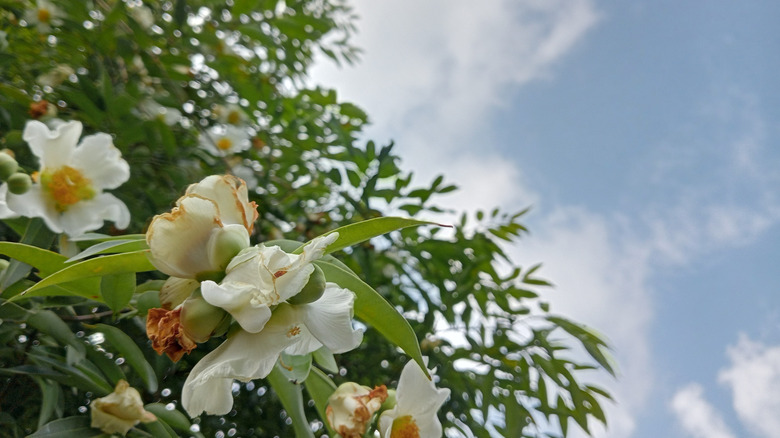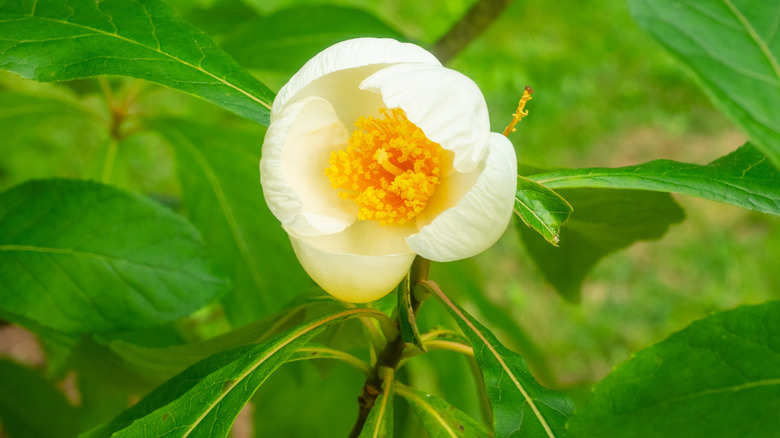The Historical Flowering Tree You Can Grow In Your Yard That Pays Off With Beautiful White Blooms
Are you looking for a touch of living history and breathtaking beauty for your outdoor space? Franklinia alatamaha, or the Franklinia tree, offers just that, promising stunning white blooms and a fascinating story you can grow right in your own yard. Discovered in the mid-18th century along the Altamaha River in Georgia by botanists John and William Bartram, this deciduous tree quickly became a favorite. Named after their family friend Benjamin Franklin, the tree blooms in late summer and early fall, when most other trees have long finished flowering. Paired with these flowers that bloom in late fall, the Franklinia tree can make your garden a late-season flowering oasis.
Beyond its beautiful white flowers, the Franklinia has significant historical importance, serving as an example of true conservation and a living link to early American botanical studies. Its story is one of near-extinction and remarkable preservation, making it more than just a pretty tree, but a piece of living history you can nurture right at home. Growing a Franklinia is an opportunity to cultivate a beautiful tree and connect your garden to the past while enjoying its amazing looks.
Bringing a legend home: Taking care of the Franklinia tree
Taking care of a Franklinia tree requires knowing its favorite type of growing environment. Along with these other plants that love acidic soil, this tree thrives in a similar low pH soil that's well-drained, in growing zones 5 through 8. When choosing a site in your yard, consider a location that receives full sun to partial shade, ideally with some protection from the harsh afternoon rays, especially in warmer climates. Amending the soil with organic matter like compost or peat moss before planting will help create the slightly acidic conditions it likes, which will boost the tree's long-term health. Even though it's native to the southeastern United States, avoid planting a Franklinia tree in areas where cotton has previously grown, since a soil-borne disease harmful to cotton can also negatively affect Franklin trees.
Regular watering is important, particularly during dry spells and in its first few years after planting, to help it establish a strong root system. While typically a resilient tree, the Franklinia can be susceptible to root rot if the soil is waterlogged, so good drainage is needed. Mulching around the base of the tree with pine needles or shredded bark can help retain moisture, suppress weeds, and maintain a consistent soil temperature. This helps the tree stay healthy and bloom into the early fall.
The unique beauty and botanical history of the Franklinia tree
The Franklinia tree stands out not only for its beauty but also for its special history. Unlike many popular garden trees, the Franklinia is the only species in its genus, a botanical isolation that reinforces how unique it is. After its discovery, the tree mysteriously disappeared from the wild in the early 19th century, likely due to changes in habitat or other environmental factors. All existing Franklinia trees around the world today are descendants of seeds that were collected by the Bartrams before its disappearance. This remarkable lineage means that every Franklinia tree you come across is a direct link to those original wild trees, carrying a story of survival and botanical intervention that adds so much value to its already considerable charm.
Its most distinguishing feature is its flowers: Five-petaled, cup-shaped white flowers with a prominent cluster of bright yellow stamens. These flowers often continue to open even as the leaves begin to turn bright shades of orange, red, and purple, creating a spectacular display. These late-season blooms makes the Franklin tree a wonderful addition to any yard, providing visual interest when many trees and plants are fading. Paired with other types of beautiful flowering trees, the Franklinia tree can help provide colorful blooms for an extended season.


